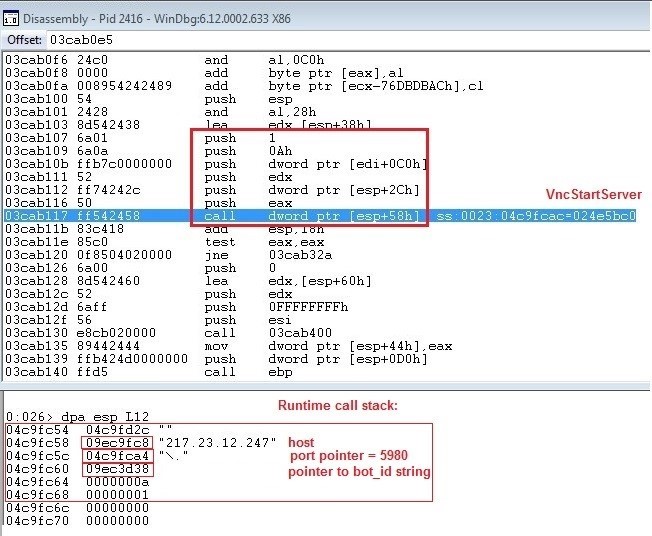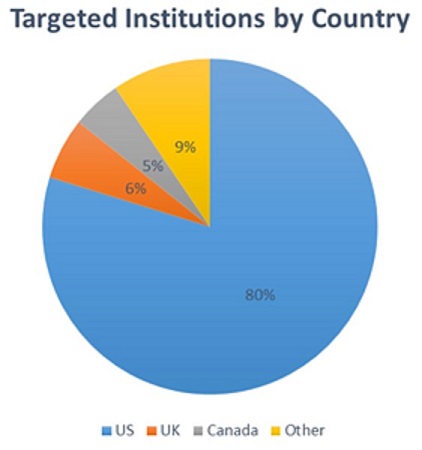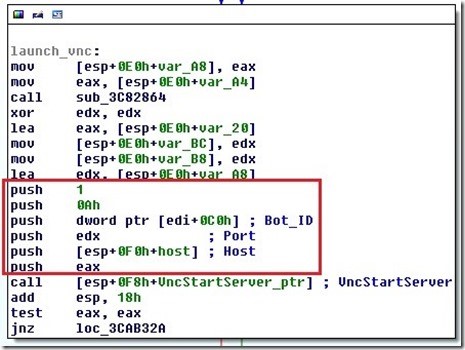Our ongoing campaign analysis has revealed that Dridex malware’s latest campaign focus has strongly shifted in recent months from U.K. banks, which had been the main targets previously, to US banks today. Dridex and its latest trends are constantly monitored in our lab, which allowed us to take note when many new targets were recently added to the target list. Redirects to fake pages were most common with U.K. bank incidents. Now the malware mainly uses classical webinjects alongside the redirection technique.
The latest campaign is marked as Botnet 301, version 196810.
The Dridex target list was significantly expanded (129 redirect and injection directives), mainly focusing on U.S. financial institutes, form-grabbing targets on social media sites (which are also related to the United States), credit card companies, and financial investment corporations.
The most noticeable observation in the current webinjects is that most of them are accompanied by activating the VNC functionality, which enables the fraudsters to remotely connect to their victim during the credentials theft.
New Form-Grabbing Targets
Dridex also steals credentials for non-financial accounts, both over HTTP communication and HTTP over SSL (HTTPS) encrypted communication:
There have been several targets, including:
- Yahoo
- Microsoft
- Skype
- AOL
How Dridex Initiates VNC Communication
VNC research conducted by malware researcher Hadas Dorfman
Dridex continues using the VNC functionality in order to remotely connect to machines to facilitate the committing of fraudulent transactions.
The VNC is used inside the redirection mechanism, which was described in our previous article, Dridex Botnet 220 campaign.
The following is a snippet of a classical Dridex webinject:
When the site’s URL matches the URL regex in the webinject, Dridex will inject another “script” tag into the original response from the bank. This will cause the browser to issue a request for the JavaScript script mentioned in the “src” ("scripts/contextprov23.js").
As a result, the request for the script is generated with the domain of the targeted site.
For example, if the targeted site was mybank.com, the request for the script that was generated would be "mybank.com/scripts/contextprov23.js".
When the request for this script is generated within the browser, it is intercepted by the malware’s network hook and is passed to the redirection mechanism, as seen in Figure 5.
When the requested script is checked against such a redirection directive and there is a match, the request for the script is dropped and the same script request is launched to a different domain (the “URI” directive), so the script is actually fetched from the fraudster’s server.
During the redirection mechanism, the VNC flag (part of the redirect directive in the malware configuration) is checked, and if it’s true, the VNC module is launched. This triggers the browser network hook to deliver a message to the Dridex worker module inside the explorer.exe process. This message signals the worker module to launch the VNC module.
The module “vnc_x32” (or “vnc_x64” for 64-bit systems) is responsible for the VNC functionality. It exports: “VncStartServer” and “VncStopServer” functions to operate this activity.
While the Dridex worker module inside the explorer.exe process receives the message to launch VNC, the “VncStartServer” function address is resolved and the appropriate function is called.
Static Code Analysis Of A “Vncstartserver” Call:
Runtime Debugging View:

Once the VNC server is started, the fraudster is able to remotely connect and use the victim’s machine.
Tested MD5: f6a9835201d5cae894863a46bbf12d69












